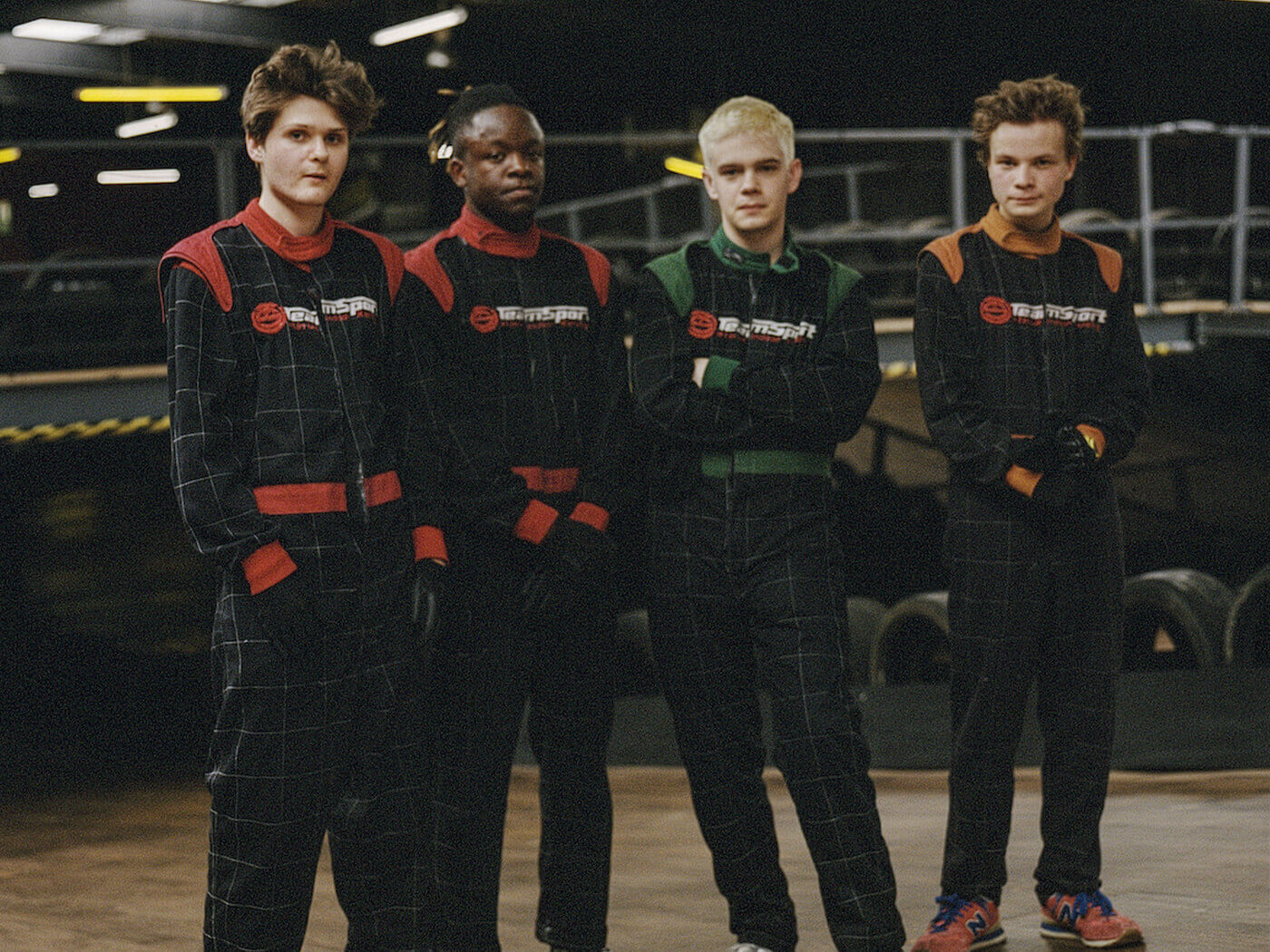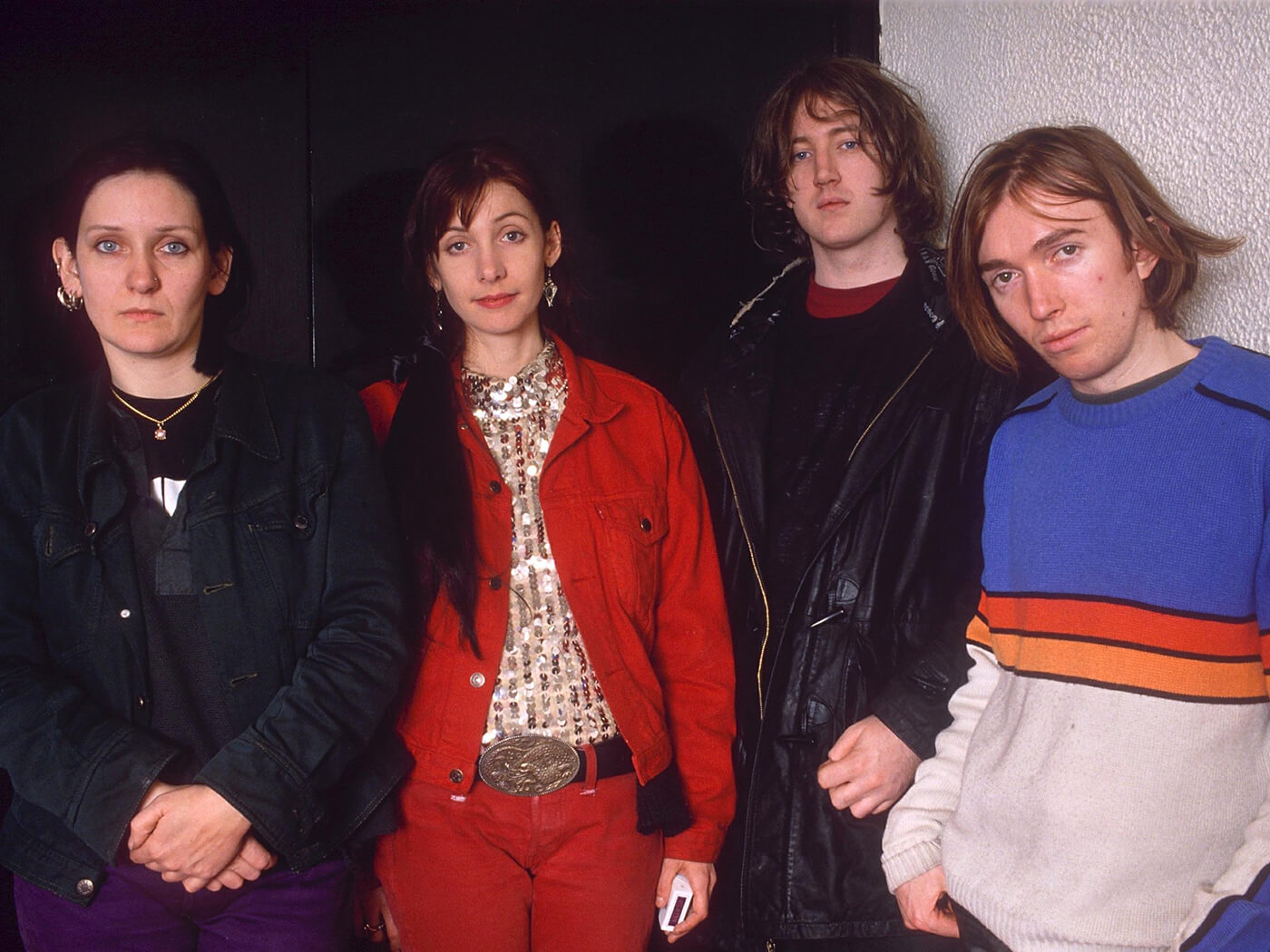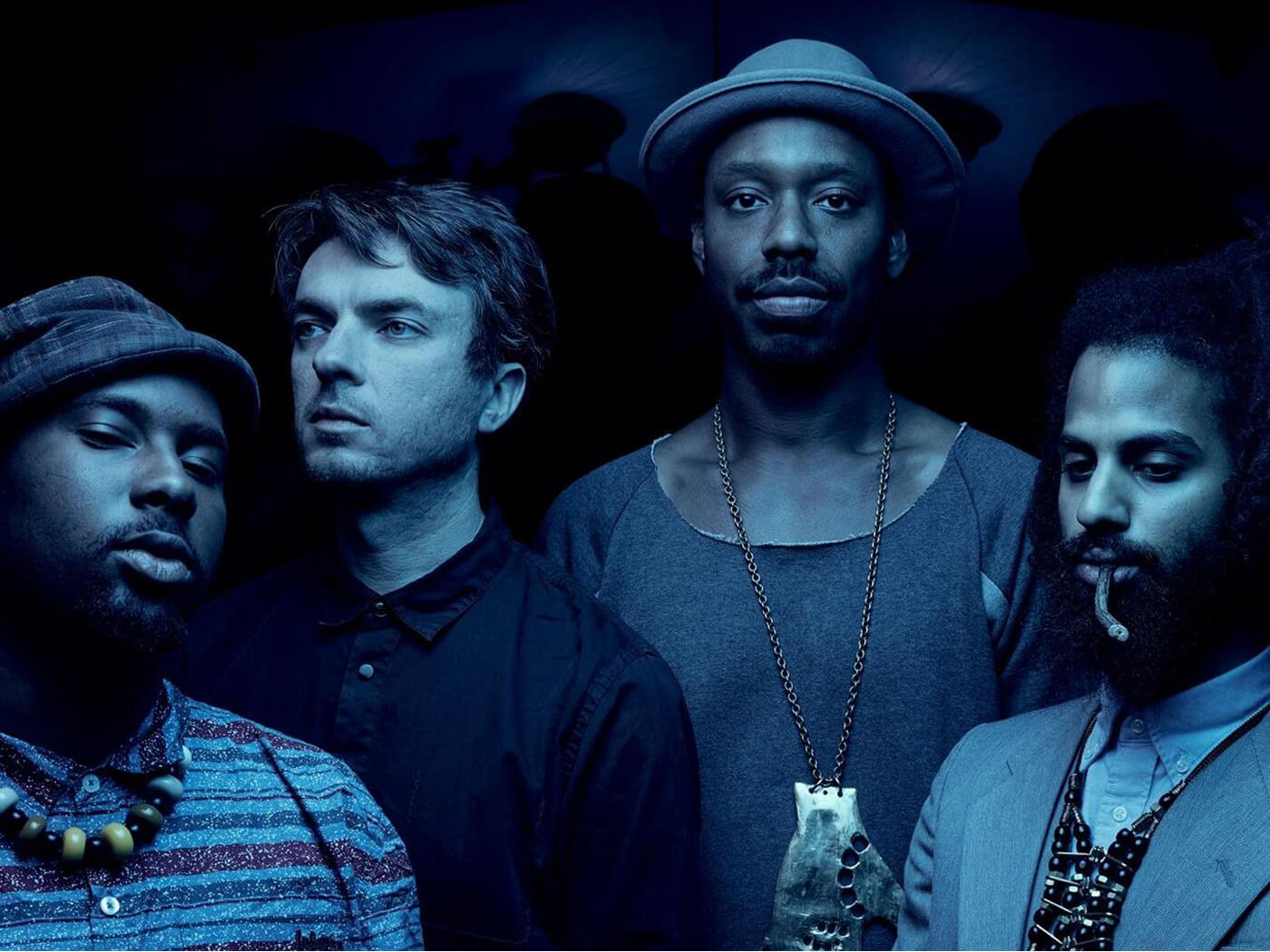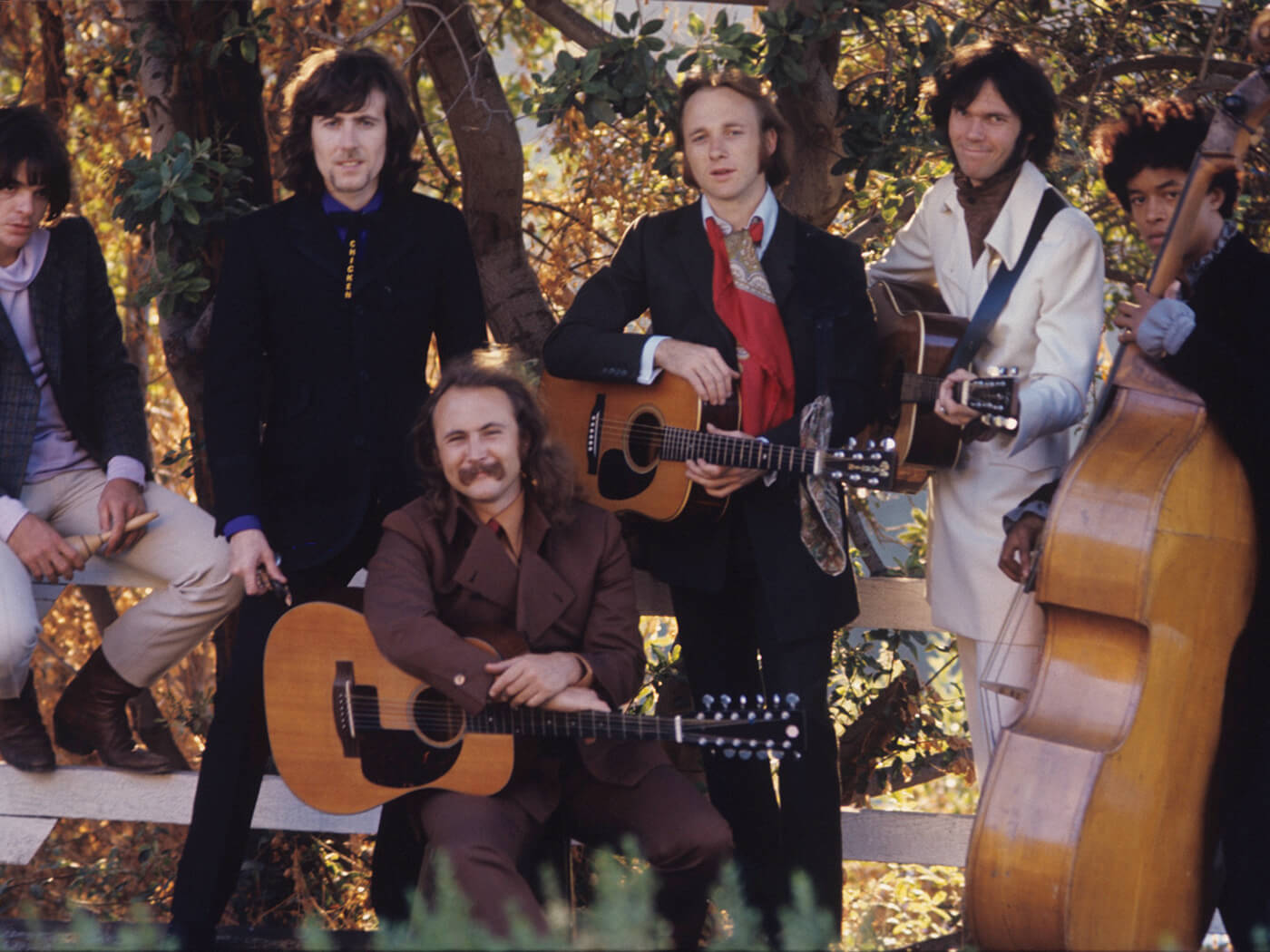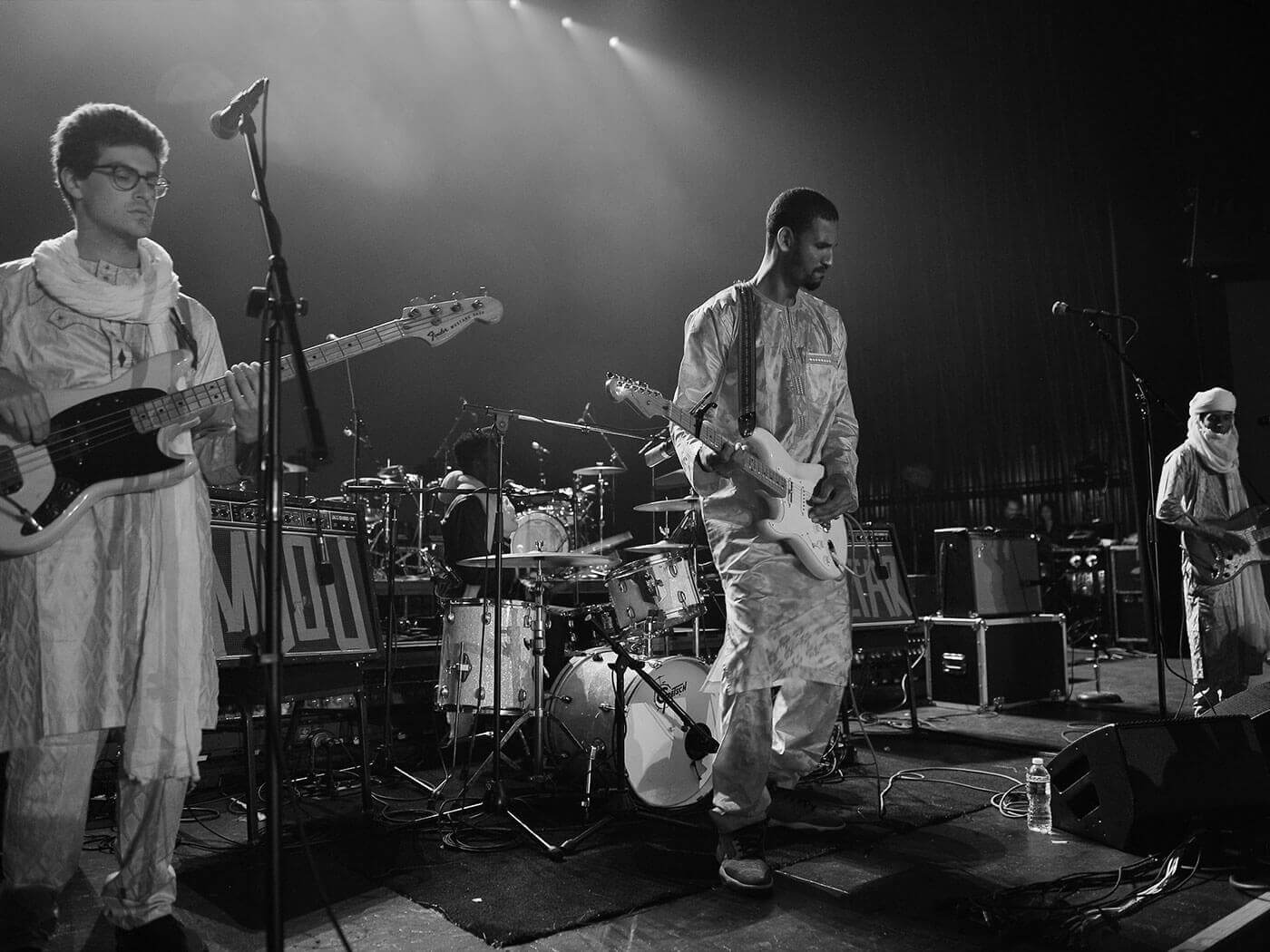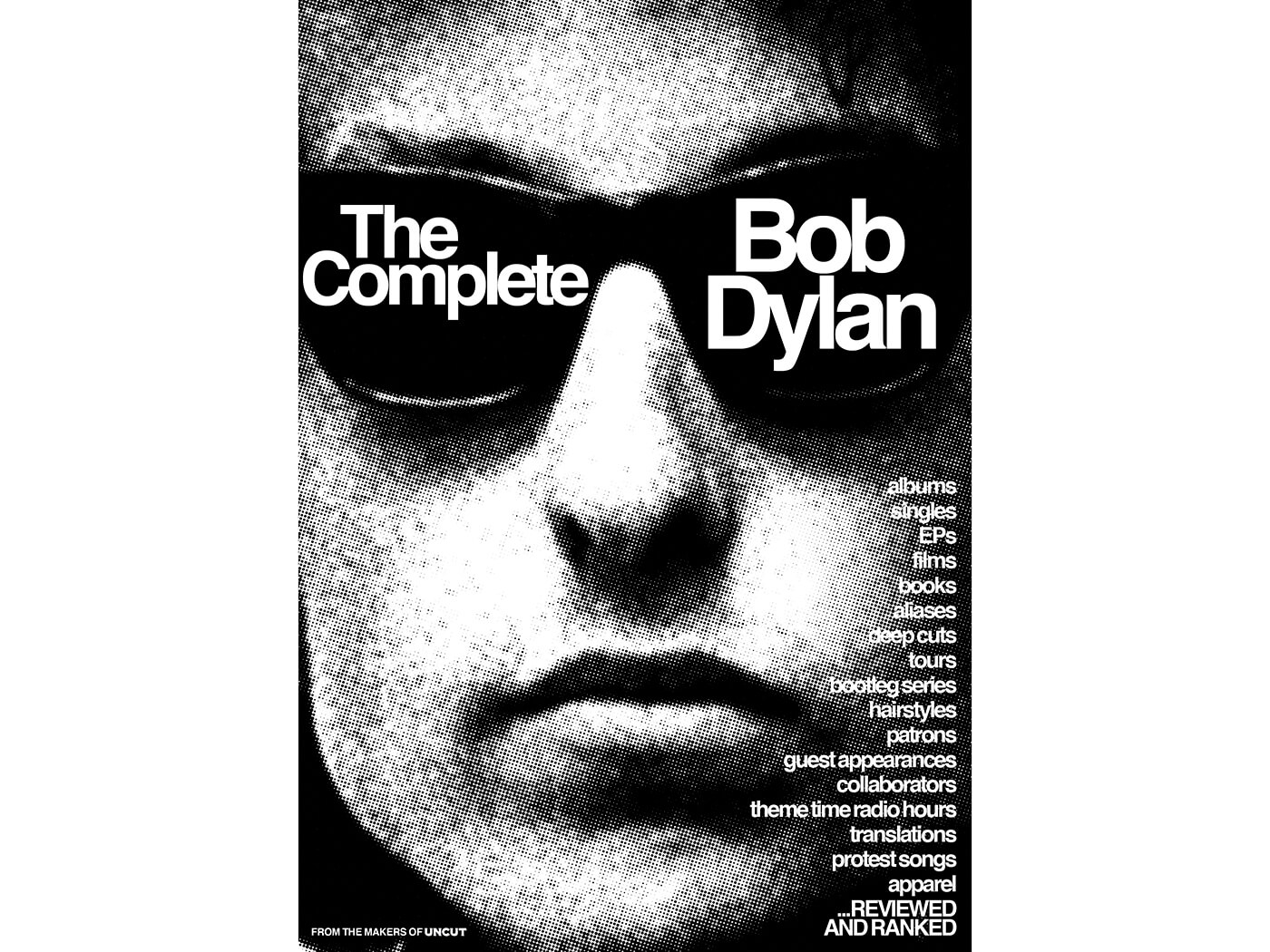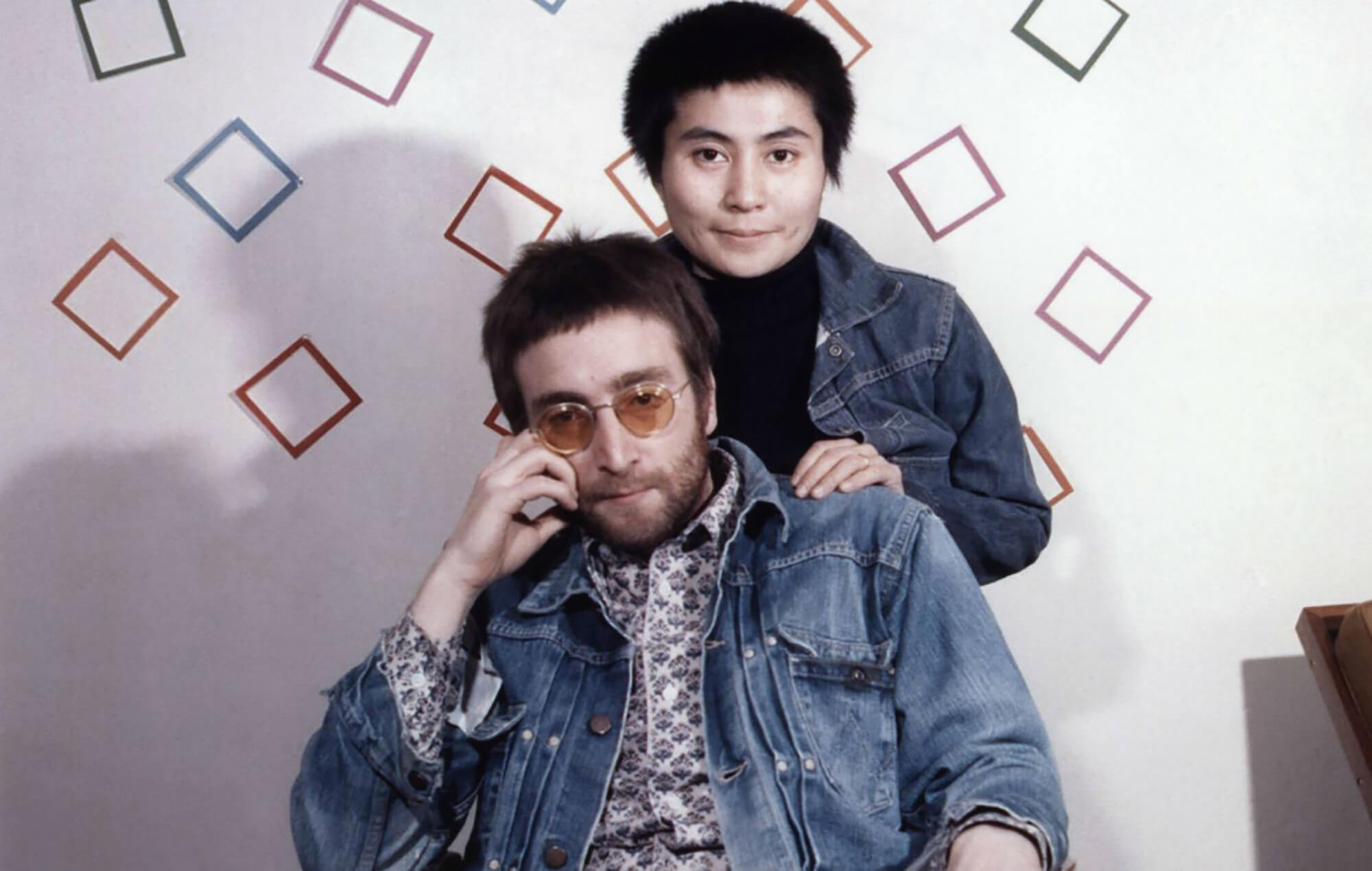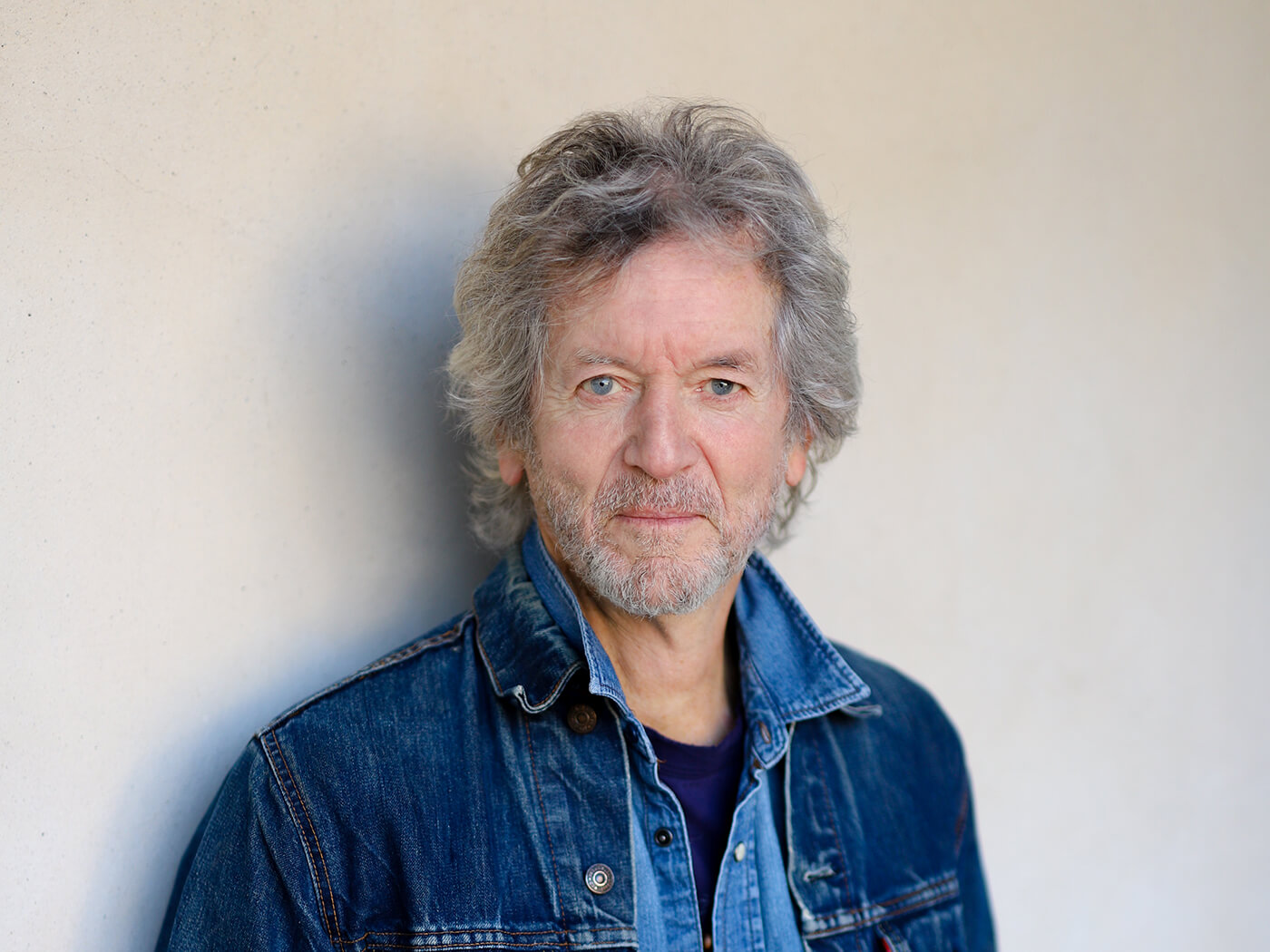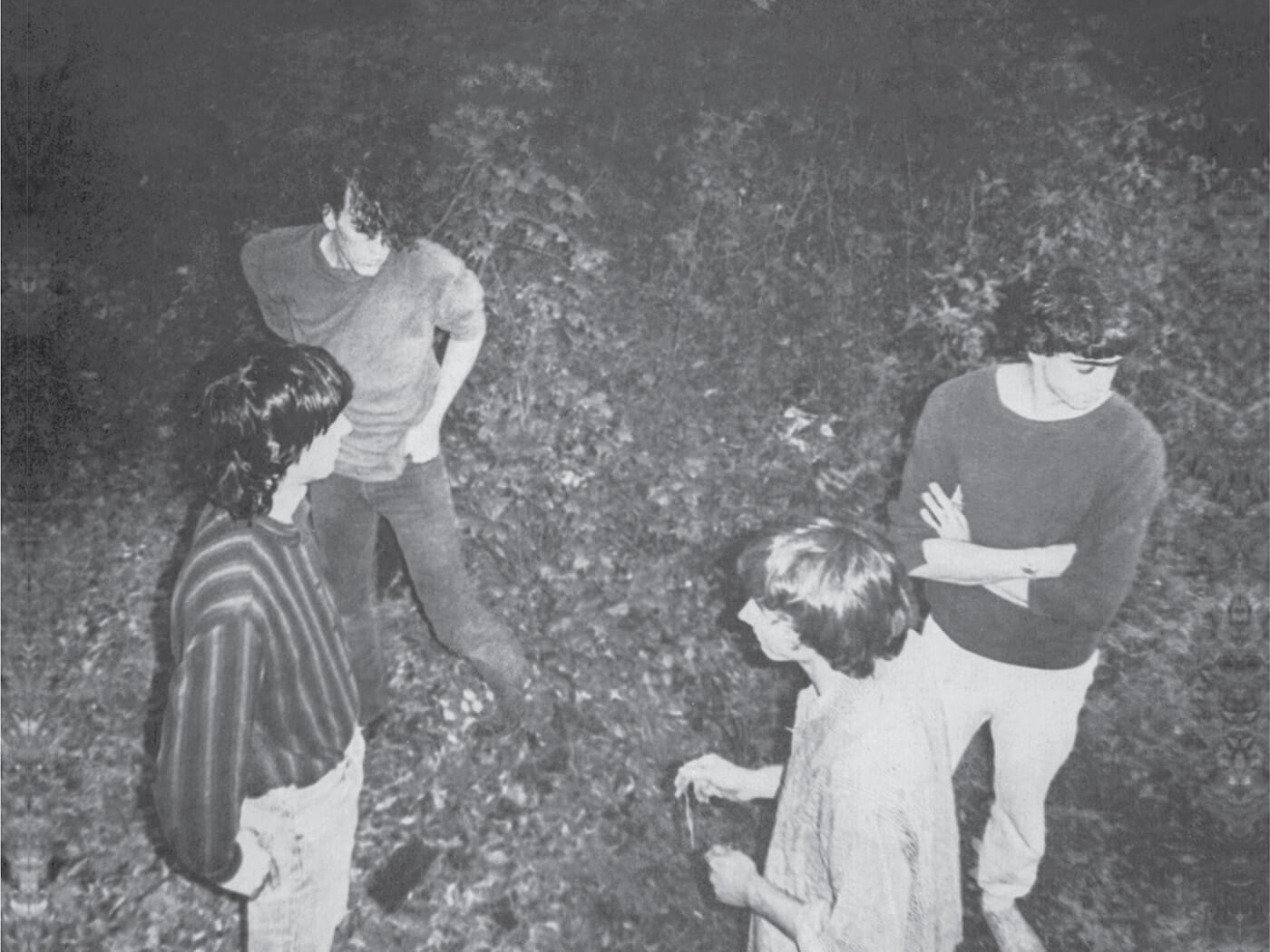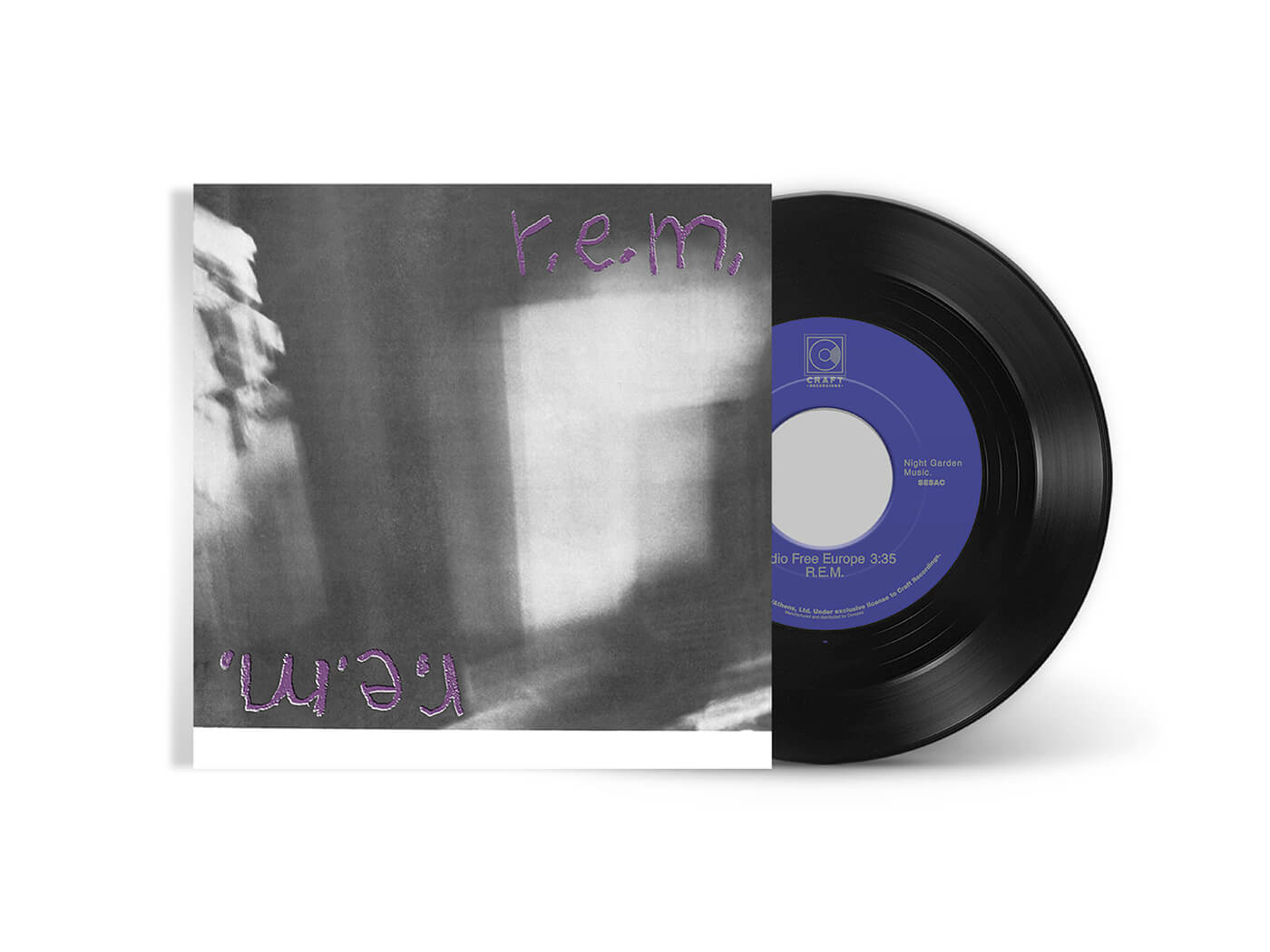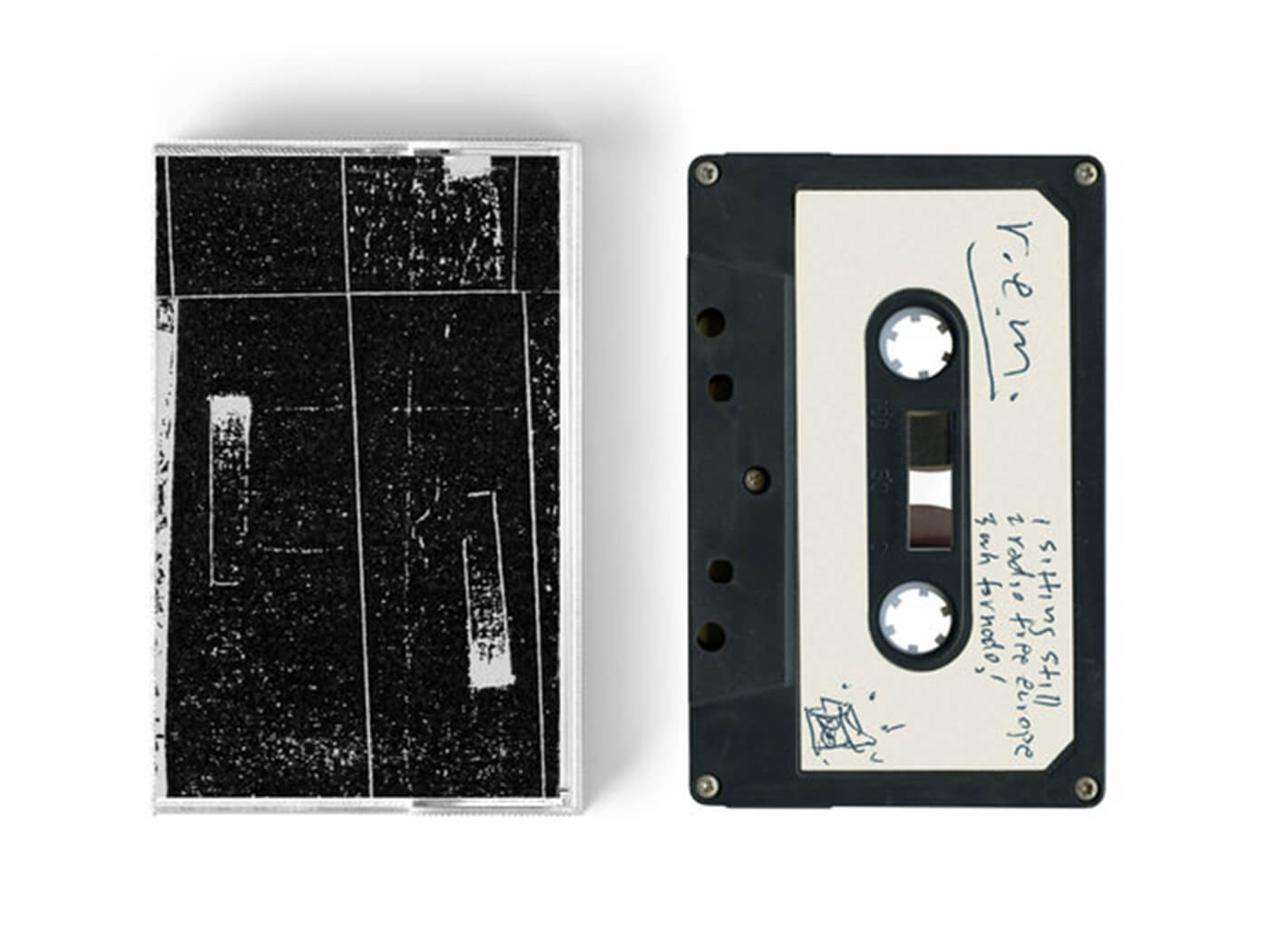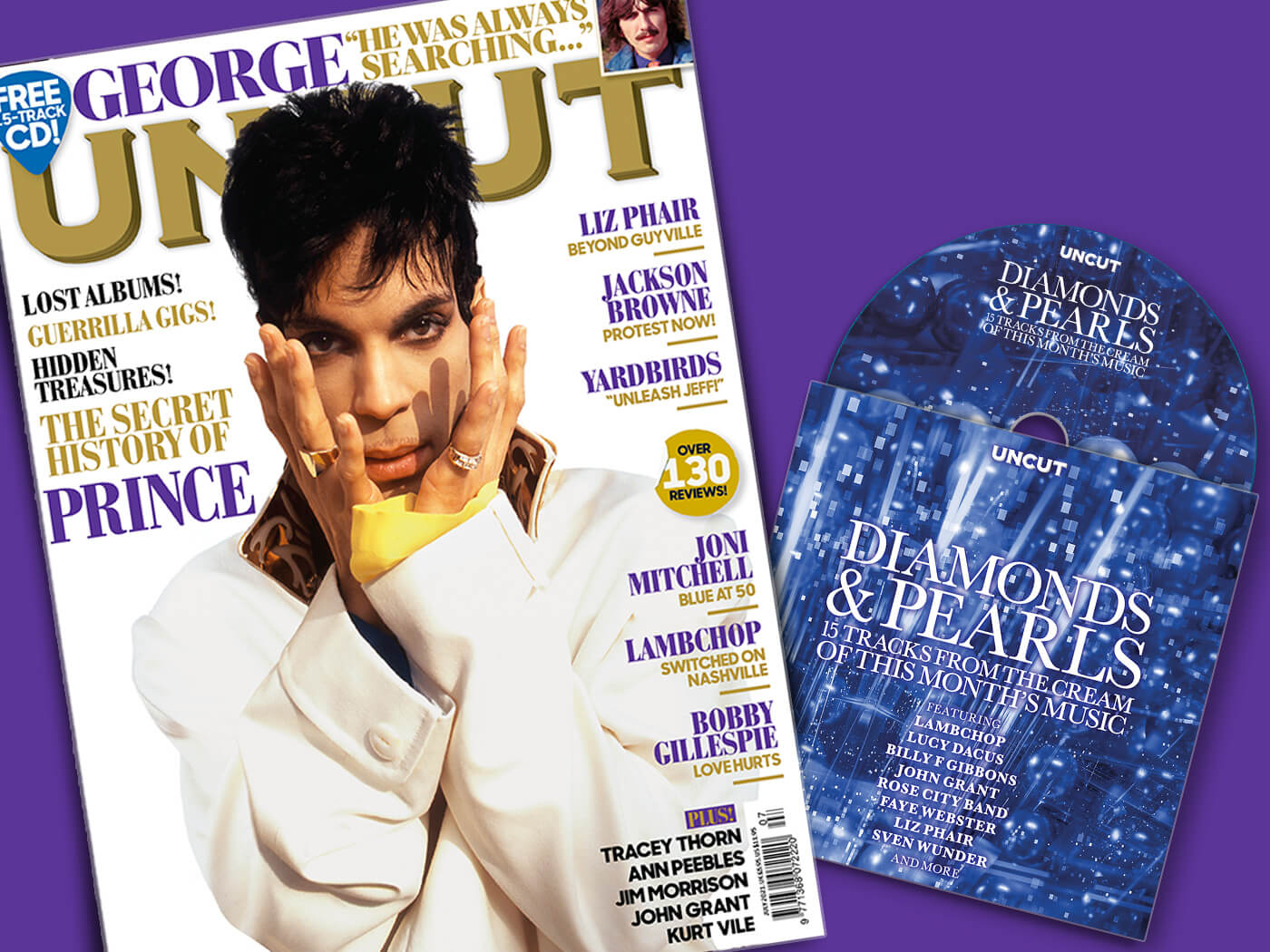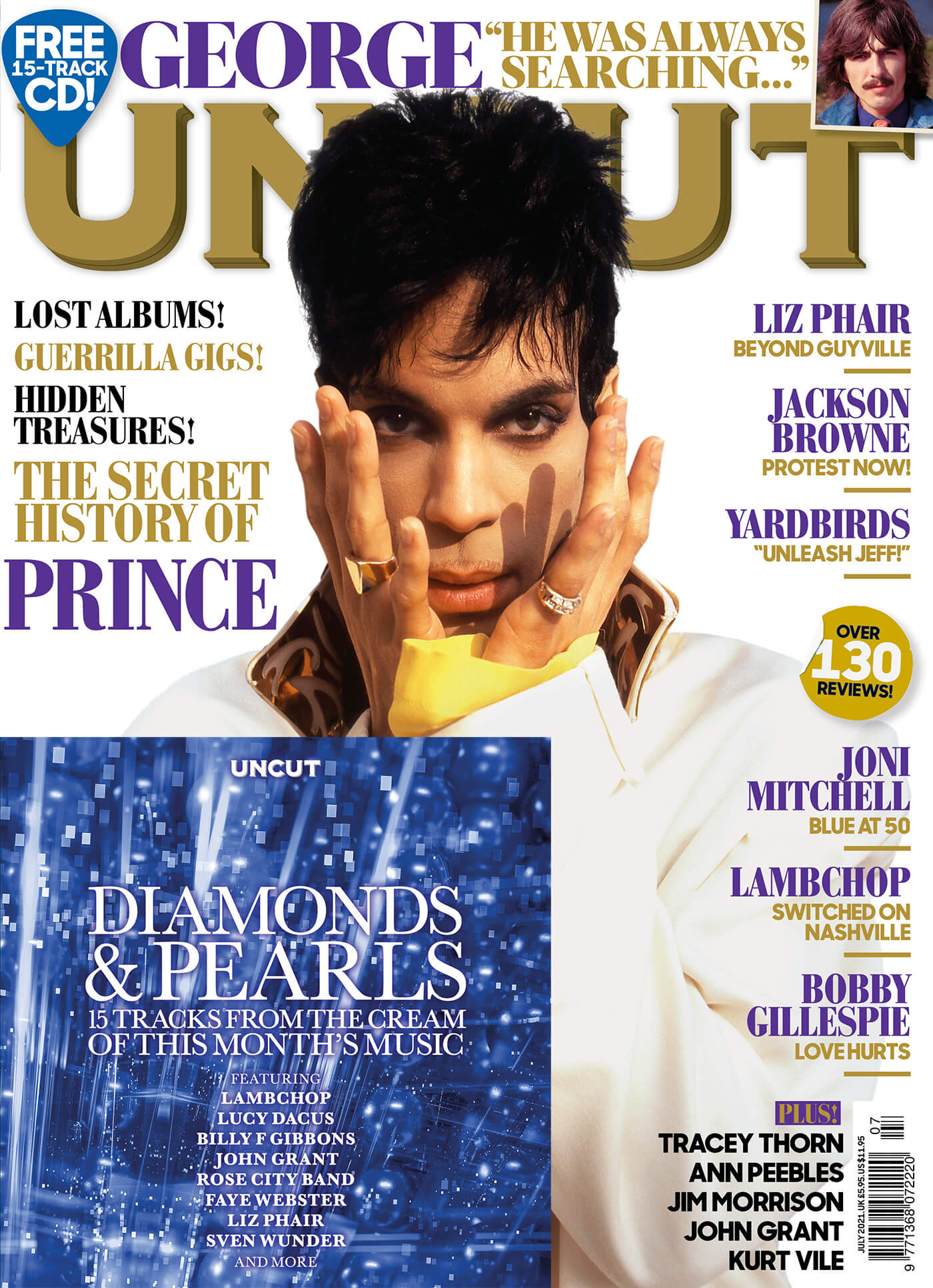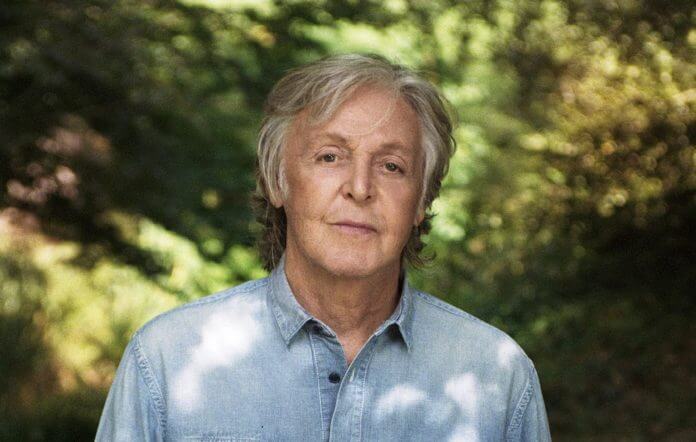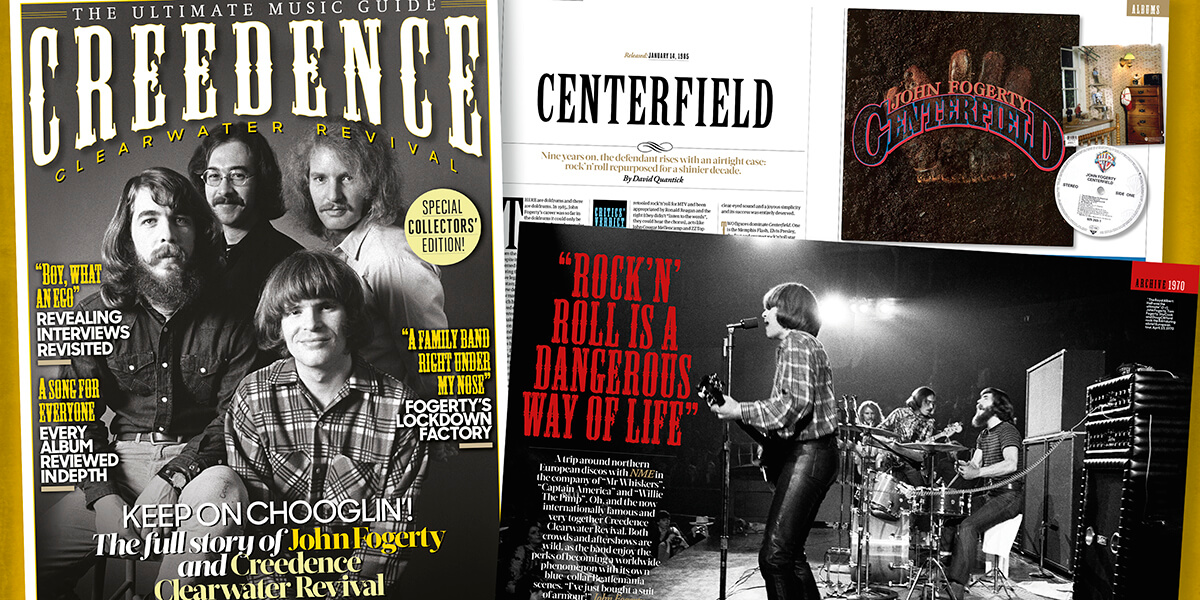CLICK HERE TO GET THE NEW UNCUT DELIVERED DIRECT TO YOUR DOOR
Prince, Liz Phair, Bobby Gillespie, George Harrison, Lambchop, Ann Peebles, Kurt Vile, Jackson Browne, Gary Bartz, Tracey Thorn, Faye Webster, BLK JKS, The Orb and Joni Mitchell all feature in the new Uncut, dated July 2021 and in UK shops from May 20 or available to buy online now. As always, the issue comes with a free CD, this time comprising 15 tracks of the month’s best new music.
PRINCE: For decades, his vaults have been rock’n’roll’s own El Dorado – a mythical place filled with untold treasures. We carry out an extensive archaeological survey into this legendary archive and discover – via revelatory eyewitness accounts from 3rdeyegirl, Pepé Willie, Dez Dickerson, Shelby Johnson, Matt Thorne and Paisley Park Records’ manager Alan Leeds – a trove of lost albums, mysterious side-projects and secret gigs that amount to an entire parallel history stretching far back to his earliest days in Minneapolis.
OUR FREE CD! DIAMONDS & PEARLS: 15 fantastic tracks from the cream of the month’s releases, including songs by Liz Phair, Lambchop, Faye Webster, Lucy Dacus, Loscil, Billy F Gibbons, Anthony Joseph, Rose City Band and more.
This issue of Uncut is available to buy by clicking here – with FREE delivery to the UK and reduced delivery charges for the rest of the world.
Inside the issue, you’ll find:
LIZ PHAIR: After an 11-year absence, she has returned to reclaim her title of fearless songwriting superstar. But how has a song about Lou Reed, a country-rap crossover hit and her own trailblazing debut helped prepare her to re-enter the fray? “I’ve had to pick myself up from being dead many times…”
BOBBY GILLESPIE: Primal Scream’s inveterate rabble-rouser has written a memoir about his early life and recorded an album of heartworn duets inspired by the country greats. He’s even – finally – come to terms with his early records. But where is all this soul-searching heading? “People want us to take their heads off. But I don’t know if that’s the kind of music I want to keep on making.”
LAMBCHOP: The pandemic has brought back into focus the qualities that inspired Kurt Wagner to make music in the first place. But as a new album ushers in yet another new era for his band, there’s no danger of him dwelling on his many former glories. “Hopefully, I can live up to the future…”
JACKSON BROWNE: From Greenwich Village to LA’s Troubadour and beyond, Jackson Browne has always written songs about love, hope and defiance – but with his new album Downhill From Everywhere these themes have taken on a bold, new urgency. “I’ve always been connected with people who are trying to make things better…”
GEORGE HARRISON: He was a “cocky little boy” of 17 when he met Klaus Voormann during The Beatles’ formative residencies in Hamburg. They remained close confidants and Voormann enjoyed a ringside seat – as friend, flatmate and collaborator – during the Fabs’ imperial phase and, later, Harrison’s own blossoming solo career. Uncut listens as Voormann recalls tales involving fish finger diets, late-night phone calls from “Herr Schnitzel” and the making of George’s very own masterpiece…
KURT VILE: On his role in a brand new tribute to The Velvet Underground. “It was powerful as hell…”
TRACEY THORN: The Everything But The Girl star answers your questions on the New Romantics, working with Paul Weller and how her knitting is going…
ANN PEEBLES: The making of “I Can’t Stand The Rain”.
GARY BARTZ: Album by album with the lifelong sax explorer.
FAYE WEBSTER: New album I Think I’m Funny haha is reviewed at length, while the wunderkind sheds light on her favourite guitar, fake fadeouts and the beauty of Atlanta.
CLICK HERE TO GET THE NEW UNCUT DELIVERED DIRECT TO YOUR DOOR
In our expansive reviews section, we take a look at new records from Lucy Dacus, BLK JKS, John Grant, Faye Webster, Billy F Gibbons, Vincent Neil Emerson, David John Morris, Anthony Joseph, and more, and archival releases from Spirits Rejoice, Joni Mitchell, The Yardbirds, Hailu Mergia & The Walias Band, Squarepusher and others. We catch Tame Impala and Moses Boyd live online; among the films, DVDs and TV programmes reviewed are First Cow, In The Earth, 1971: The Year That Music Changed Everything and My Name Is Lopez; while in books there’s Buzzcocks, Tom Petty And The Heartbreakers and Kristin Hersh.
Our front section, meanwhile, features Jim Morrison, Kurt Vile, Dot Allison and Cedric Burnside while, at the end of the magazine, The Orb’s Alex Paterson reveals the records that have soundtracked his life.
You can pick up a copy of Uncut in the usual places, where open. But otherwise, readers all over the world can order a copy from here.


